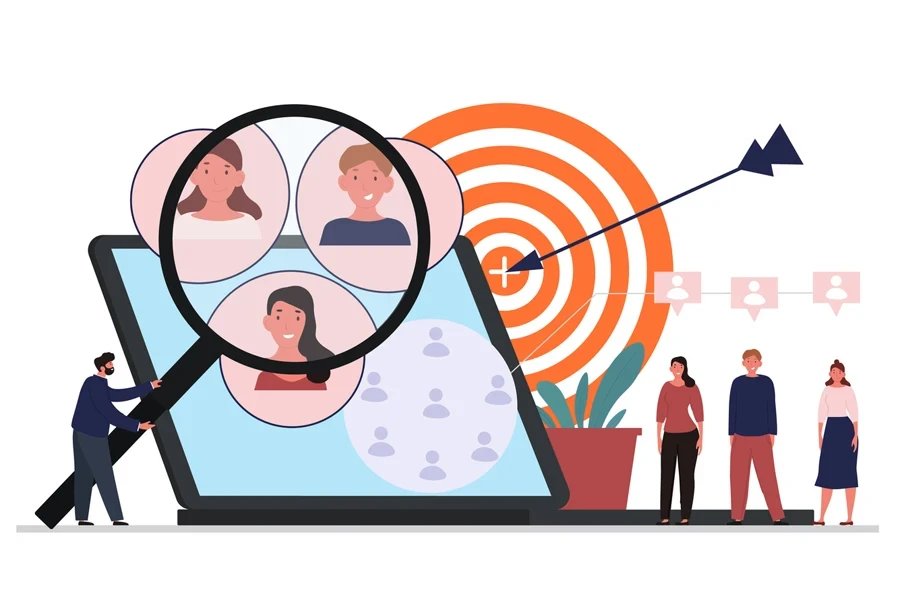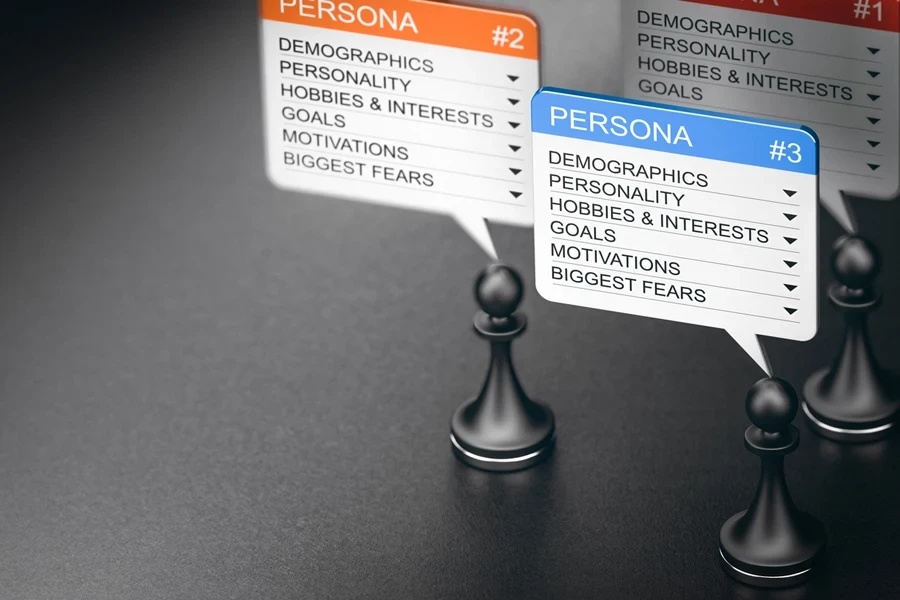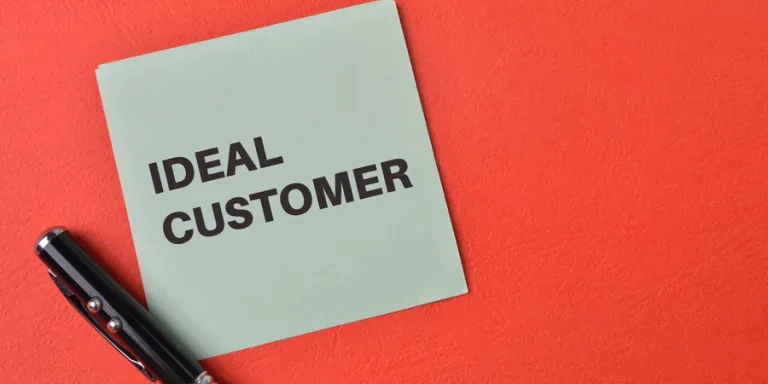In today’s crowded digital marketplace, truly understanding your customers is more important than ever. Cutting through the noise and connecting with your ideal audience requires deep insights into their needs, preferences, and behaviors. This is where buyer personas come in—a powerful tool that can help you unlock the secrets of your target customers and tailor your marketing efforts for maximum impact.
Table of Contents
● What is a Buyer Persona?
● Why buyer personas matter
● Crafting your buyer personas: An 8-Step process
● Buyer persona best practices
What is a Buyer Persona?
A buyer persona is a fictionalized representation of your ideal customer, based on real data and informed insights about their demographics, behaviors, motivations, and challenges. More than just a target market description, a detailed buyer persona puts a face and name to your key customer segments, creating a vivid picture of the real people you aim to attract and serve.
For example, a business selling vertical-raised planting pots might say, “Our buyer persona is:
- Urban Gardener Grace
- Age: 35
- Location: Seattle, Washington
- Occupation: Graphic designer
- Income: $75,000/year
- Education: Bachelor’s degree in design
- Family: Lives with partner in a 2-bedroom apartment
- Psychographics:
- Values sustainability and eco-friendly living
- Enjoys cooking with fresh herbs and vegetables
- Likes to entertain friends and host dinner parties
- Appreciates modern, minimalist design aesthetics
- Strives to make the most of limited urban living space
- Goals:
- Create a productive garden in a small apartment balcony
- Grow fresh, organic produce for cooking and sharing
- Maximize vertical space to accommodate more plants
- Enhance apartment décor with an attractive planter setup
- Connect with a like-minded community of urban gardeners
While businesses often have multiple buyer personas to represent different customer types, it’s important to also identify negative personas—profiles of individuals you don’t want to target, as they are unlikely to convert and may even drain your resources. For instance, you might have a persona like “Indecisive Ivan”, who constantly inquires about product details, shipping policies, and special requests, but rarely follows through with a purchase. By focusing on your ideal personas and avoiding negative ones, you can create more relevant, resonant marketing content.

Why Buyer Personas Matter
The benefits of developing detailed buyer personas are numerous. When you have a clear picture of your ideal customer, you can:
- Create more targeted ad campaigns
By understanding your personas’ demographics, interests, and online behaviors, you can craft ad content that speaks directly to their needs and place it in the channels they frequent most. According to HubSpot, targeted advertisements are twice as effective as non-targeted ads.
- Bring focus and clarity to your marketing efforts
Buyer personas help align your entire team around a common understanding of your customers, enabling you to create more relevant, consistent messaging across all touchpoints. With personas, you can move from generic marketing to tailored content that resonates with specific audience segments.
- Prioritize high-impact marketing channels
Insights into your personas’ preferred platforms and content formats help you focus your resources on the channels that matter most, rather than spreading yourself too thin. By meeting your ideal customers where they are, you can maximize your marketing ROI.
- Develop content that resonates and converts
When you know your audience’s pain points, desires, and decision-making factors, you can craft content that speaks directly to their needs and guides them through the buyer’s journey. In fact, persona-driven content can improve web conversions by 10% on average.
- Make faster, more informed business decisions
A deep understanding of your customers enables you to make data-driven decisions with confidence, from product development to customer service. By consistently referencing your personas, you can ensure that all aspects of your business remain aligned with your target audience’s needs.

Crafting Your Buyer Personas: An 8-Step Process
Developing effective buyer personas requires a systematic approach that combines qualitative and quantitative research. Here’s an 8-step process to guide you:
- Interview current customers
Start by conducting in-depth interviews with 5-10 of your best customers or surveying 20+ to uncover their buying motivations, decision-making processes, and perceived alternatives. Such as:
- Why did you buy our product?
- What alternatives did you pick us over and why?
- Where did you look for information when making this decision?
- Why did you buy this now, not earlier or later?
The key focus of your buyer persona research should be understanding your customers’ unique buying process and decision-making criteria, not just their general demographics or interests. By diving deep into your ideal customer’s purchasing journey, you gain invaluable insights into how to tailor your products, services, and marketing messages to resonate with them at every stage. This level of specificity is what sets buyer personas apart from generic customer profiles and enables you to create truly targeted, effective strategies for attracting and converting your ideal audience.
- Gather general audience data
Supplement your interviews with data from web analytics, social media insights, industry reports, and competitor research to fill in demographic and psychographic details about your target audience.
- Define 2-3 key personas
Look for patterns and commonalities in your research to identify distinct customer segments. Start with 2-3 core personas that represent your most important customer types.
- Identify crucial persona details
Flesh out each persona with relevant details such as age, location, job title, income level, interests, challenges, and buying preferences. Focus on characteristics that directly impact their purchasing decisions. These are the ones to watch:
- Location: Where do they live? (e.g., urban, suburban, rural, specific cities or regions)
- Age: What is their general age range? (e.g., 25-34, 35-44, 45-54)
- Gender: What is the most likely gender of this customer?
- Education: What is the education level of this persona? If relevant, what did they study?
- Job Title: What’s their field of work, and what job titles do they typically hold?
- Income: What is the income range and purchasing power of this persona?
- Relationship Status: Are they single, married, or in a relationship?
- Language: What languages do people in this persona speak?

- Conduct persona-specific research
Dive deeper into each persona’s online behavior, preferred content formats, trusted information sources, and engagement patterns. Use tools like Google Analytics, and customer support data to enrich your profiles. If you’ve been selling on Facebook, Facebook Audiences can be a great place to help you conduct audience research. Another way to help you depict your buyer persona is looking at established competitors. Tools like SimilarWeb(free) and Market Explorer (paid) by SEMRush are there to help you study your competitors’ audience in your industry.
- Create persona profiles
Bring all your research together into concise, visually engaging persona profiles that are easy for your team to reference and internalize. Give each persona a name, photo, and memorable description.
- Gut-check for accuracy
Review your personas with your team and customers to ensure they accurately reflect your actual customer base. Refine as needed based on feedback.
- Translate insights into action
Developing a detailed buyer persona is just the first step—the real value lies in using those insights to inform your business decisions and marketing strategies. By keeping your ideal customer front and center, you can craft more targeted, effective campaigns that resonate with their specific needs and preferences. Let’s consider a hypothetical persona, “Vegetarian Jolie.” Based on her profile, you might:
- Target ads to users who list “Vegetarian” as their job tag on social media platforms or tap into the social communities that she’s in.
- Prioritize instagram, as it is the lifestyle social platform that vegetarians most willingly share their diet routines and gain inspiration from others’ life.
- Develop targeted ads highlighting the environmental benefits of homegrown produce, using eco-friendly imagery and messaging that resonates with Jolie’s sustainability values—a key decision factor for green-conscious vegetarians like Jolie.
- Create a series of posts and videos featuring delicious, plant-based recipes that can be made with herbs and veggies grown in the company’s planting pots. Share this content on instagram and optimize it for search keywords like “vegetarian gardening tips” or “sustainable container gardening.”
- Offer a special discount code for customers who pledge to grow their own produce and reduce their environmental footprint. Promote this campaign on Instagram and target ads to users like Jolie who are passionate about sustainable living.
- Showcase customer testimonials and photos from other vegetarian gardeners who have successfully used the company’s planting pots to grow their own produce. Feature these stories on the website, social media, and product pages to build trust and relatability with prospective customers like Jolie.
By leveraging Jolie’s persona insights to guide these marketing decisions, the company can create a more targeted, engaging brand experience that resonates with their ideal customer’s unique values and motivations. The key is to continually refer back to the persona profile and ask, “How can we better serve Jolie’s needs and interests at every touchpoint?”

Buyer Persona Best Practices
To get the most out of your buyer personas, keep these best practices in mind:
Start small, with 1-5 key personas
While you may have many customer segments, trying to create too many personas at once can be overwhelming and counterproductive. For example, a fashion retailer might start with just three core personas: “Trendy Tara,” “Budget-Conscious Brianna,” and “Quality-Seeking Quinn.” Focus on your most important customer types first, and expand as needed.
Don’t forget negative personas
Identifying the types of customers you don’t want to attract can be just as valuable as defining your ideal personas. For instance, a B2B software company might create a negative persona called “Freebie-Seeking Fred,” who always demands free trials or discounts without ever intending to purchase. Create 1-2 negative personas to help your team avoid wasting time and resources on poor-fit leads.
Continually refine and evolve your personas
As your business and market change over time, so too will your customer base. A persona that accurately reflected your ideal customer two years ago may no longer be relevant today. Plan to revisit and update your personas at least once a year, or whenever you experience significant shifts in your industry or customer behavior. Use data from customer surveys, analytics, and feedback to inform these updates.
Use a persona template to ensure consistency
Standardizing your persona profiles with a template makes them easier to create, reference, and share across teams. A well-designed template should include sections for demographics, psychographics, goals, challenges, preferred channels and content, and real quotes or feedback from customers who embody that persona. Using a consistent format ensures that everyone in your organization has access to the same valuable customer insights.
Conclusion
Buyer personas are an essential tool for any business looking to stand out in today’s competitive marketplace. By taking the time to deeply understand your ideal customers and craft detailed personas, you can unlock valuable insights that inform every aspect of your marketing and business strategy.
From more effective ad targeting and content creation to faster, more confident decision-making, the benefits of buyer personas are clear. By following the 8-step process outlined in this guide and adhering to persona best practices, you can start connecting with your target audience on a deeper level and driving better results for your business.





 Afrikaans
Afrikaans አማርኛ
አማርኛ العربية
العربية বাংলা
বাংলা Nederlands
Nederlands English
English Français
Français Deutsch
Deutsch हिन्दी
हिन्दी Bahasa Indonesia
Bahasa Indonesia Italiano
Italiano 日本語
日本語 한국어
한국어 Bahasa Melayu
Bahasa Melayu മലയാളം
മലയാളം پښتو
پښتو فارسی
فارسی Polski
Polski Português
Português Русский
Русский Español
Español Kiswahili
Kiswahili ไทย
ไทย Türkçe
Türkçe اردو
اردو Tiếng Việt
Tiếng Việt isiXhosa
isiXhosa Zulu
Zulu